- What is "slip"?
- Lobe pump clearances
- Pressure effect
- Temperature effect
- How viscosity affect pump sizing
- Cavitation
- Data required for rotary lobe pumps selection
- Rotary lobe pump brands andManufacturers
- Rotary lobe pump price
Lobe pump slip
Slip is the portion of the pumped product that is forced back to the suction side of the pump due to pressure through the clearances. Rotary lobe pumps sometimes do not pump the full displacement for which they are rated because of a phenomenon called slip.To allow the pump’s rotors to rotate, small clearances must be maintained between the rotors and rotorcase. Slip will change directly with pressure and clearance, and inversely with viscosity.
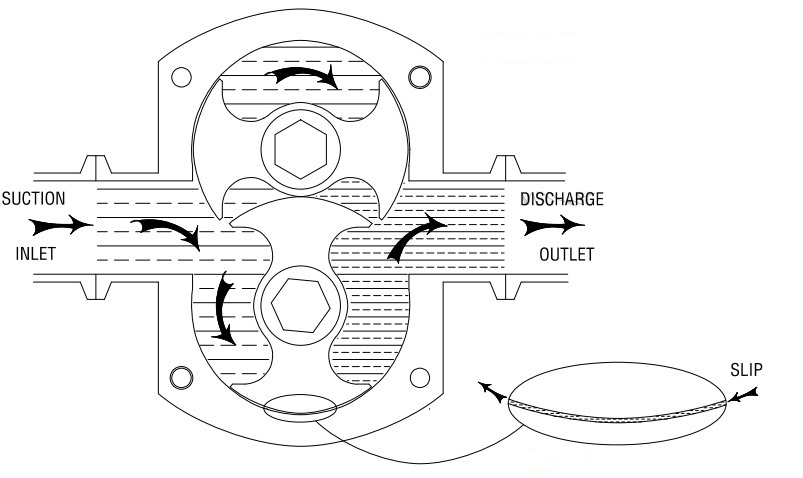
Lobe pump clearance
Within the casing of rotary lobe pumps there are clearances, which are the spaces between rotating components and between rotating and stationary components. Clearances are necessary to avoid rotor to rotor, rotor to rotorcase and rotor to rotorcase cover contact. The size of these clearances is related to the pressure and temperature of pump operation.
The key clearances are as follows:
- Radial clearance (between rotor tip and rotorcase).
- Mesh clearance (between rotors).
- Front clearance (between front of rotor and rotorcase cover).
- Back clearance (between back of rotor and back face of rotorcase).
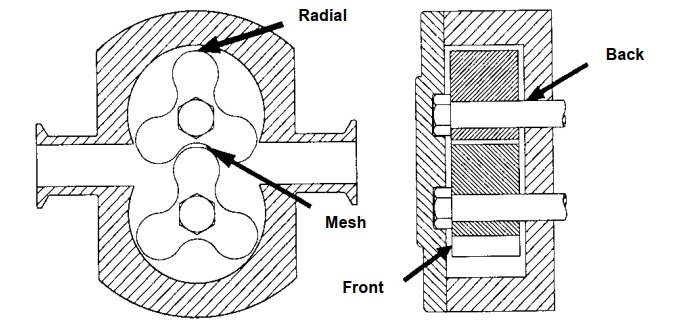
Pressure effect to the pump
The design concept of the rotary lobe pump is to have no contacting parts in the pumphead. This requires having the shaft support bearings to be mounted outside of the pumphead, which results in an overhung load, caused by the rotors fitted to the shafts as shown. The effect of pressure on the rotors will cause shaft deflection, which could result in contact between rotors, rotorcase and rotorcase cover. To allow for this pressure effect, clearances are built into the pumphead between surfaces that may contact.
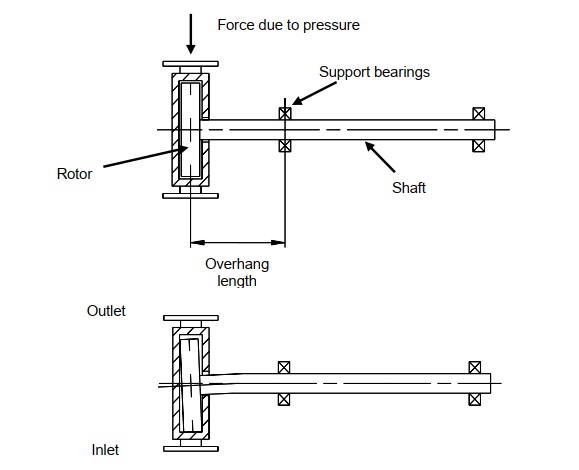
Temperature effect to the pump
Temperature change can be caused by the fluid being pumped, pump mechanism, drive unit and/or the environment. Any CIP (Cleaning In Place) operation required should also be taken into consideration. Changes in temperature will cause expansion upon heating or contraction upon cooling, to the rotorcase and gearcase components. The most significant result is movement between shaft and gearcase/rotorcase allowing the rotors to move forward or backward in the rotorcase. With the rotors being allowed to move forward there will be a reduction to the front clearance. To compensate for this, manufacturers will increase the clearance.
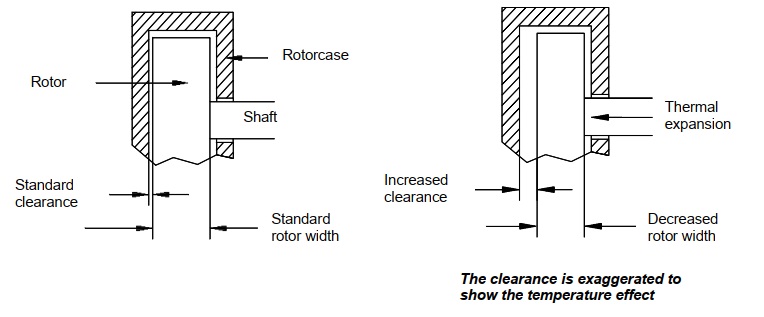
How viscosity affect pump sizing
Viscosity is a measurement of a product’s resistance to flow. Low viscosity products (e.g. water) have little resistance to flow, while higher viscosity products have a greater resistance to flow. It is key to positive pump sizing and operation because it affects slip within the pump as well as the pressure required to overcome frictional loss in the lines. Higher viscosity products smaller slip inside the pump.
How cavitation affect pump
Cavitation is the formation of vapor bubbles due to insufficient pressure at the inlet of the pump. High product temperature and/or low pressure on the inlet side of the pump can lead to insufficient pressure. Over time, cavitation can seriously damage a pump. Additional pressure energy would be required to supply the pump with the energy it requires to keep from cavitating. Four ways to increase the inlet pressure are raise the level of the product in the tank, pressurize the tank, lower the pump or decrease the product temperature.
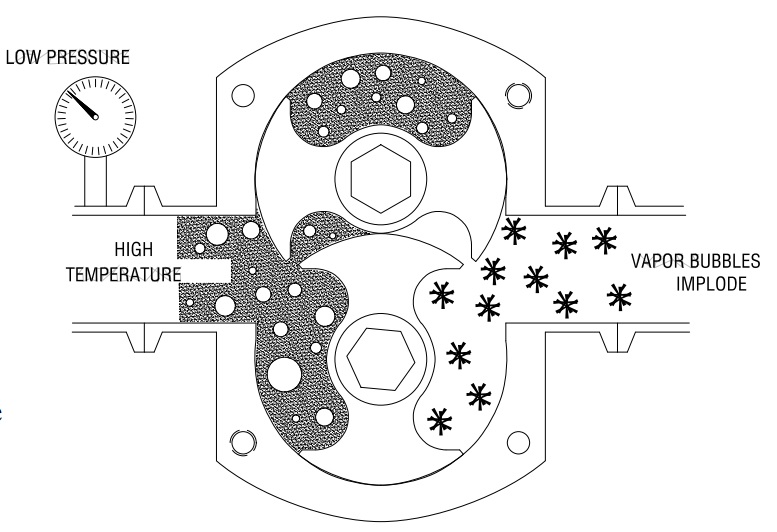
Data required for rotary lobe pumps selection Selection
- Product Name
- Product viscosity in pump, line and at rest
- Are there any solids present
- If so what are they and percentage concentration
- Specific gravity
- Capacity required
- Pumping temperature
- Discharge pressure or sketch of pipework system
- Suction pressure or sketch of pipework system
Rotary Lobe pump brands and Manufacturers
WrightFlow, Alfa laval, Waukesha, JEC, Inoxpa, Omac, Apv, Fristam, Jabsco, Xylem, boerger, Netzsch, Johnson, Bonve
Rotary Lobe pump price
For Bonve pump price, it is offered based on the customer’s requests. Below is the main need to supply.
- Bare shaft pump or complete unit required?
- If need fixed or variable speed driving?
- Material required for the liquid contact parts, such as SS304, 316, 316L, duplex 2205 etc.
- Mechanical seal type and material required?
- If required jacket or pressure relief valve?
Bonve also can recommend a suitable proposal with the budget.









